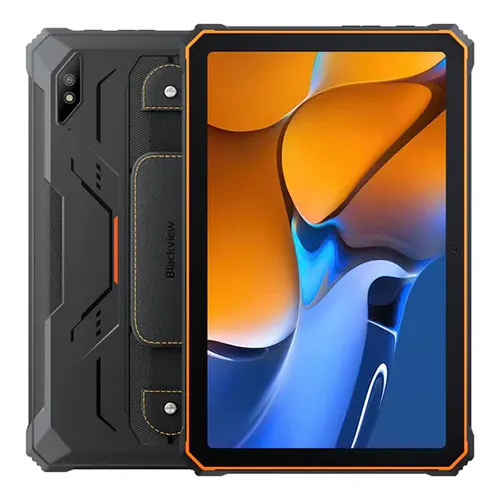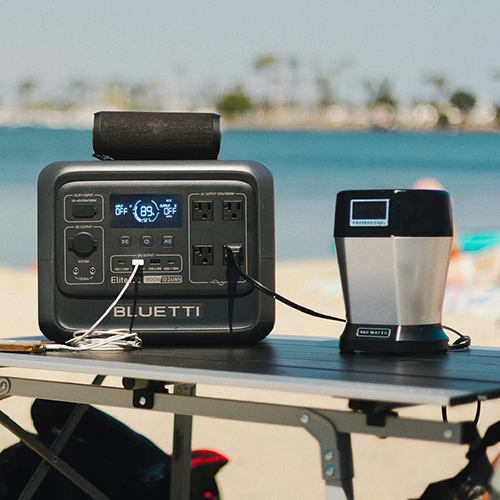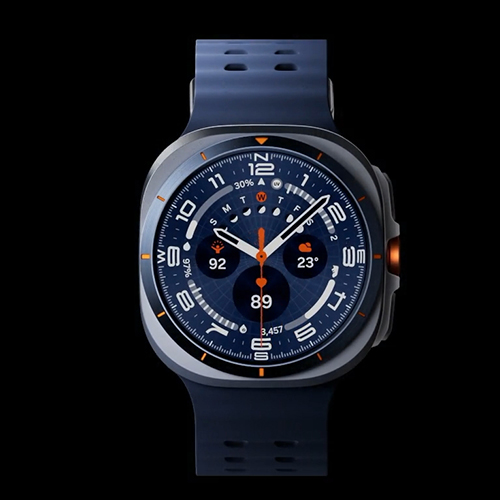
A Comprehensive Guide to Essential Audio Equipment for Audiophiles
In the world of modern audio, having the right equipment can make all the difference between a mundane listening experience and an immersive sonic journey. Whether you are an aspiring musician, a passionate audiophile, or a professional sound engineer, understanding the key types of audio equipment is essential to creating, recording, and enjoying high-fidelity sound. Join us as we dive into the fundamental tools and gear that are essential for anyone looking to explore the realm of top-notch audio quality.
What are the Types of Audio Equipments
Microphones
Starting with the basics, microphones serve as the essential gateway to capturing sound. From dynamic to condenser, ribbon to USB microphones, the market offers a diverse range of options catering to various recording needs. A quality microphone can capture the nuances of an instrument or voice, allowing for crystal-clear audio reproduction.
What are the Types of Microphones
There are several types of microphones commonly used in various applications. Some of the main types include:
Dynamic Microphones: These are robust and durable, making them ideal for live performances and recording loud sound sources.
Condenser Microphones: They are more sensitive and responsive than dynamic microphones, making them suitable for capturing vocals and acoustic instruments in a studio setting.
Ribbon Microphones: These microphones are known for their warm and natural sound. They are often used to record string instruments and guitar amps.
USB Microphones: These microphones connect directly to a computer via a USB port, making them convenient for podcasting, voiceovers, and home recording.
Lavalier Microphones: These small, clip-on microphones are commonly used in broadcast and live event settings. They are often seen attached to clothing and provide hands-free operation.
Shotgun Microphones: Designed for picking up sound from a distance, these highly directional microphones are commonly used in film and television production, especially for capturing dialogue and sound effects.
Boundary Microphones: These microphones are placed on a flat surface, such as a table or a wall, to capture sound from a specific area. They are often used in conference rooms, stage productions, and teleconferencing.
Wireless Microphones: These microphones do not require a physical cable connection to the recording device, providing freedom of movement for performers, presenters, and speakers.
Headphones and Earphones
For personal and immersive listening experiences, headphones and earphones play a vital role. Whether you prefer the over-ear comfort of headphones or the sleek, portable design of earphones, finding a pair that delivers exceptional sound clarity and comfort is crucial.
What are the Types of Headphones and Earphones
There are several types of headphones and earphones available, each designed to serve different needs and preferences. Some common types include:
Over-Ear Headphones: These headphones have large ear cups that fully enclose the ears, providing excellent sound isolation and typically delivering high-quality sound.
On-Ear Headphones: These headphones rest on the ears without fully enclosing them. They are generally more compact and portable than over-ear headphones.
In-Ear Monitors (IEMs): Also known as earbuds, these devices fit snugly into the ear canal, providing passive noise isolation and a portable listening experience.
True Wireless Earbuds: These are wireless earbuds that have no connecting wires between them. They are known for their portability and convenience.
Wireless Headphones: These headphones connect to audio devices via Bluetooth or other wireless technologies, allowing for greater freedom of movement without the constraint of wires.
Noise-Cancelling Headphones: These headphones actively cancel out external noise, creating a peaceful listening experience even in loud environments.
Gaming Headsets: Designed specifically for gaming, these headsets often feature a built-in microphone, surround sound capabilities, and other gaming-specific features.
Sports Earphones: These earphones are designed to be sweat-resistant and secure during physical activities, making them ideal for use during workouts and sports.
Each type of headphone or earphone has its own unique features and benefits, catering to different use cases and personal preferences.
Speakers and Amplifiers
When it comes to sharing the audio experience, speakers and amplifiers are indispensable. High-quality speakers ensure that the sound produced is rich, detailed, and true to the original recording, while amplifiers help to boost the power and impact of the audio output, creating a captivating listening experience.
What are the Types of Speakers and Amplifiers
There are various types of speakers and amplifiers, each serving different purposes and offering distinct features. Here are some common types:
Type of Speakers:
Floor-standing Speakers: These tall, freestanding speakers are designed to sit on the floor and are known for delivering powerful, full-range sound.
Bookshelf Speakers: Smaller than floor-standing speakers, these speakers can be placed on bookshelves or stands. They are ideal for smaller rooms and offer excellent sound quality.
Soundbars: These long, slim speakers are designed to sit beneath a TV or be mounted on a wall. They provide an immersive sound experience, particularly when used with televisions.
Subwoofers: These speakers are dedicated to reproducing low-pitched audio frequencies (bass). They are often paired with other speakers to enhance the overall audio experience.
Satellite Speakers: Small speakers are used in surround sound systems to provide ambient and background audio. They are typically paired with a subwoofer to create a complete sound system.
Types of Amplifiers:
Stereo Amplifiers: These amplifiers are designed to power two speakers, typically left and right channels, and are commonly used for stereo sound systems.
Integrated Amplifiers: These amplifiers combine a preamplifier and a power amplifier in a single unit, simplifying the setup process and saving space.
AV Receivers: Audio/Video (AV) receivers serve as a central hub for home theatre systems. They include built-in amplification and video-switching capabilities, enabling them to connect to various audio and video sources.
Tube Amplifiers: These amplifiers use vacuum tubes to amplify audio signals. They are known for producing warm and rich sound, making them popular among audiophiles.
Digital Amplifiers: Also known as Class D amplifiers, these amplifiers use digital switching to amplify audio signals efficiently, often providing high power output with minimal heat generation.
Understanding the different types of speakers and amplifiers can help you make informed decisions when setting up your audio systems and choosing the right equipment for your needs.
Mixers and Digital Audio Workstations (DAWs)
For those involved in the production and mixing of audio, the importance of mixers and Digital Audio Workstations (DAWs) cannot be overstated. Mixers allow for the blending and adjustment of various audio signals, while DAWs provide a comprehensive platform for recording, editing, and producing digital audio, making them a staple for music producers and sound engineers alike.
What are the Types of Mixers and Digital Audio Workstations
Here are the common types of mixers and Digital Audio Workstations (DAWs):
Types of Mixers:
Analog Mixers: These mixers process audio signals using analogue circuitry, allowing for direct manipulation of sound waves. They are known for their warm and natural sound, often preferred by audio purists.
Digital Mixers: Digital mixers convert audio signals into digital data for processing, offering a wide range of advanced features such as digital effects, built-in signal processing, and precise control over audio parameters.
Summing Mixers: These mixers are used to combine and sum multiple audio signals into a stereo or mono output. They are commonly employed to enhance the sound quality of digital audio workstations.
Powered Mixers: These compact, all-in-one mixers include built-in power amplifiers, making them suitable for small venues, events, and mobile performances. They are often used in portable sound systems and live sound setups.
Types of Digital Audio Workstations (DAWs):
Pro Tools: Widely used in professional audio recording and production, Pro Tools offers comprehensive features for recording, editing, and mixing music and audio.
Logic Pro: Designed for macOS, Logic Pro is a powerful DAW with a user-friendly interface and an extensive collection of virtual instruments and effects for music production.
Ableton Live: Primarily used for electronic music production and live performance, Ableton Live is known for its intuitive interface and real-time capabilities, making it a popular choice among electronic musicians and DJs.
FL Studio (Fruity Loops): Ideal for beat-making and electronic music production, FL Studio provides a range of virtual instruments, effects, and pattern-based sequencing tools.
Cubase: Known for its comprehensive set of recording and editing tools, Cubase is widely used in professional music production and is suitable for various genres and styles.
Understanding the differences between these types of mixers and DAWs can help individuals select the appropriate equipment for their specific audio production needs and preferences.
Sound Processors and Effects Units
To add depth and texture to audio, sound processors and effects units are employed. These tools allow for the application of various effects such as reverb, delay, and equalization, enabling the creation of unique and customized soundscapes.
What are the Types of Sound Processors and Effects Unites
Here are some common types of sound processors and effects units used in audio production and music performance:
Types of Sound Processors:
Equalizers (EQs): Used to adjust the balance of frequency components within an audio signal, allowing for precise control over the tonal characteristics of the sound.
Compressors: These processors reduce the dynamic range of an audio signal, ensuring a more consistent and balanced output by attenuating the loud parts of the signal and boosting quieter sections.
Limiters: Similar to compressors, limiters prevent the audio signal from exceeding a specified threshold level, thus avoiding any clipping or distortion that could occur when the signal reaches its peak.
Reverberation Units: These devices simulate the natural reverberation of different acoustic spaces, adding depth and ambience to dry or close-miked sounds, making them sound more natural and spacious.
Delay Units: These devices produce delayed repetitions of an audio signal, allowing for the creation of echo effects, rhythmic patterns, and spatial enhancements in music production.
Types of Effects Units:
Modulation Effects (Chorus, Flanger, Phaser): These effects create dynamic changes in the sound by modulating the audio signal, resulting in rich, swirling, and sweeping textures that can add depth and movement to the audio.
Time-Based Effects (Reverb, Delay): These effects alter the perception of time and space within the audio, creating ambient environments and spatial enhancements to the sound.
Distortion and Overdrive Effects: These effects alter the waveform of the audio signal, adding harmonics and creating a wide range of tonal textures, from subtle warmth to heavy distortion.
Pitch Shifters and Harmonizers: These effects modify the pitch of the audio signal, allowing for the creation of unique harmonies, transpositions, and other pitch-related manipulations.
Filters (High-pass, Low-pass, Band-pass): These effects modify the frequency content of the audio signal, allowing specific frequencies to pass through while attenuating others, thus shaping the overall tonal characteristics of the sound.
Understanding the various types of sound processors and effects units can significantly enhance the creative possibilities and overall quality of audio production and sound engineering.
Conclusion
By familiarizing yourself with the various types of audio equipment available, you can enhance your understanding of the intricacies of sound and elevate your listening and production experiences. Whether you're an enthusiast exploring the depths of high-fidelity sound or a professional seeking to create impeccable audio productions, the right combination of audio equipment can truly transform the way you perceive and interact with sound.
Frequently Asked Questions
1. What are the key factors to consider when choosing a microphone for recording?
The key factors include the microphone type (condenser, dynamic, ribbon), polar pattern (omnidirectional, cardioid, figure-8), frequency response, sensitivity, and impedance. Other considerations might involve the intended use, budget, and recording environment.
2. How can I improve the sound quality of my home audio system without spending a fortune?
Simple measures can significantly enhance sound quality, such as optimizing speaker placement, minimizing room echo and reflections, using quality speaker cables, and experimenting with room treatments like acoustic panels or bass traps.
3. What is the difference between open-back and closed-back headphones, and which is better for me?
Open-back headphones provide a more spacious soundstage and natural sound but allow sound to leak in and out. Closed-back headphones offer better noise isolation and more powerful bass response but can sometimes feel "clogged" or lack the openness of sound.
4. How do I set up a basic home recording studio on a budget?
Start with essentials like a good-quality audio interface, a reliable microphone, studio headphones, and a digital audio workstation (DAW). Invest in soundproofing or acoustic treatment for your recording space and consider purchasing budget-friendly but quality studio monitors for accurate sound monitoring.
5. What are the essential features to look for in a high-quality sound system for a home theatre setup?
Important features include a powerful AV receiver with adequate channels, high-quality speakers and subwoofers, support for the latest audio formats like Dolby Atmos and DTS:X, HDMI inputs, and wireless connectivity options for seamless streaming from various devices.
Latest Blogs

Exploring Memory Card Types: A Comprehensive Guide

Blackview Tablet Reviews: A Comprehensive Look at Features and Performance

The Best Portable Power Stations & Solar Generators in the UK (2025 Guide)

10 Best Smartwatches for Kids


